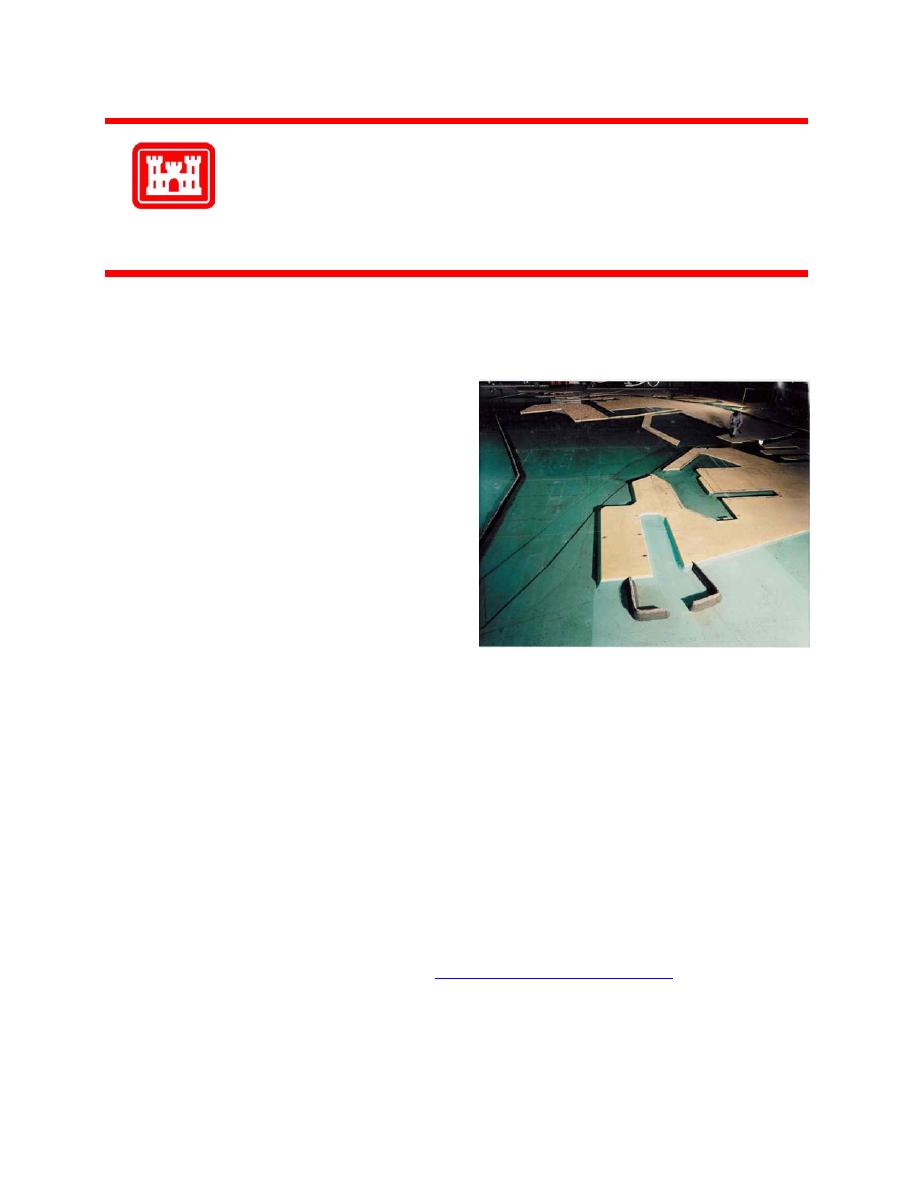
Fact Sheet
US Army Corps of Engineers
U.S. Army Engineer Research and Development Center
January 2003
Public Affairs Office
3909 Halls Ferry Road
Vicksburg, MS 39180-6199
(601) 634-2504
http://www.wes.army.mil
Los Angeles and Long Beach Harbors Model Study
Background: The ports of Los Angeles (POLA) and
Long Beach (POLB), in coordination with the U.S. Army
Engineer District, Los Angeles (SPL), have been develop-
ing new plans for harbor expansion. These plans will be
constructed in phases, leading up to a master plan devel-
opment targeted for the year 2020. The harbors have a
history of surge due to long-period waves which create
excessive ship motion in certain areas. Consequently, the
ports and the Corps plan to ensure optimization of pro-
posed expansions to minimize ship motions in the new
basins, as well as preventing adverse effects in existing
harbors areas.
Research Description: The U.S. Army Engineer Re-
search and Development Center constructed a physical
model of the Los Angeles-Long Beach Harbors complex
during the period from July 1972 to July 1973. The model has a 1:100 vertical scale and a 1:400 horizontal scale
and reproduces the entire harbor area, the shoreline from Point Fermin to Huntington Beach and underwater con-
tours out to -300 ft. The total model area is 44,000 sq ft. It is the largest wave action model ever constructed in the
United States. Waves are generated by a 210-ft-long electrohydraulic wave generator which can be positioned to
reproduce curved wave fronts and is computer controlled to generate waves of varying heights and periods. In addi-
tion to the physical model, extensive field data has been acquired and numerical models have been developed to
assist in studies of harbor oscillation, ship motion, harbor circulation, and water quality.
Applications of the model: The physical model recently has been used to: a) collect data for the POLA's Pier 400
expansion project. (This is a two-phase project which involves the creation of over 500 acres of new landfill to ac-
commodate sixteen new berths.) b) study proposed improvements to the POLB's Pier J and Navy Basin facilities,
and c) investigate effects of proposed main channel deepening and pier expansions within the Los Angeles harbor.
Most recently, the model was used to assist the POLB in determining the effects of proposed modifications to sev-
eral marine terminals within Long Beach Harbor. This latter study has been completed and is currently in the report
preparation phase.
The model has shown that it accurately predicts harbor oscillation patterns and has been applied to several
projects. It will continue to be operated as a planning and design tool as expansion of the harbors continue.
Points of Contact: Michael J. Briggs 601-634-2005 ( Michael.J.Briggs@erdc.usace.army.mil ) or Dennis G.
Markle, 601-634-3680 ( Dennis.G.Markle@erdc.usace.army.mil ).



 Previous Page
Previous Page
